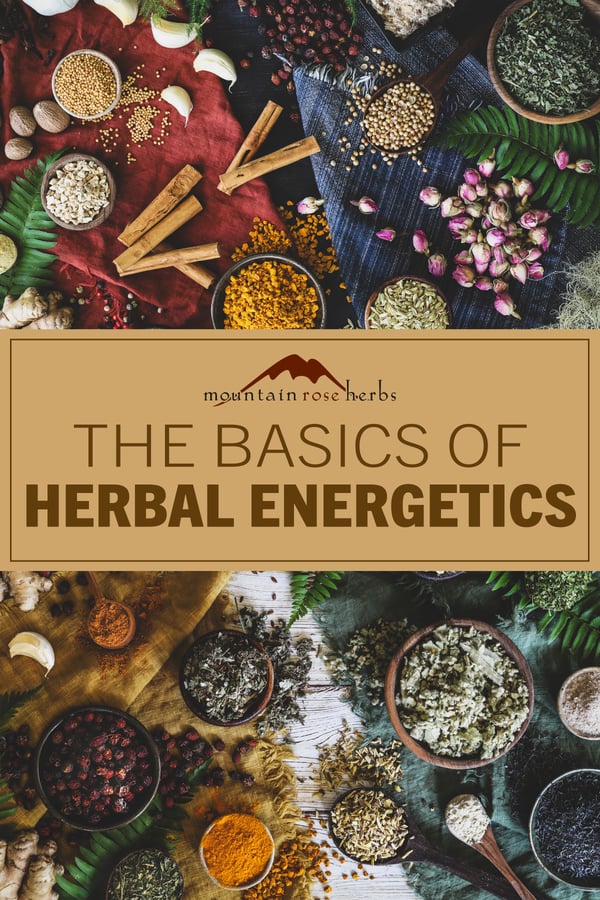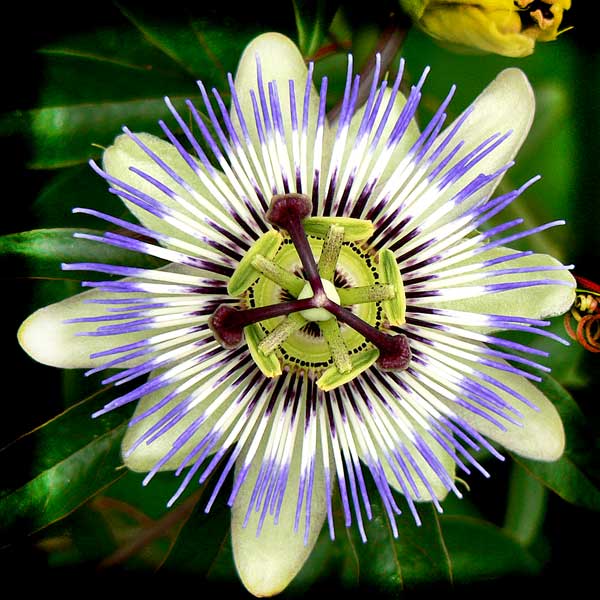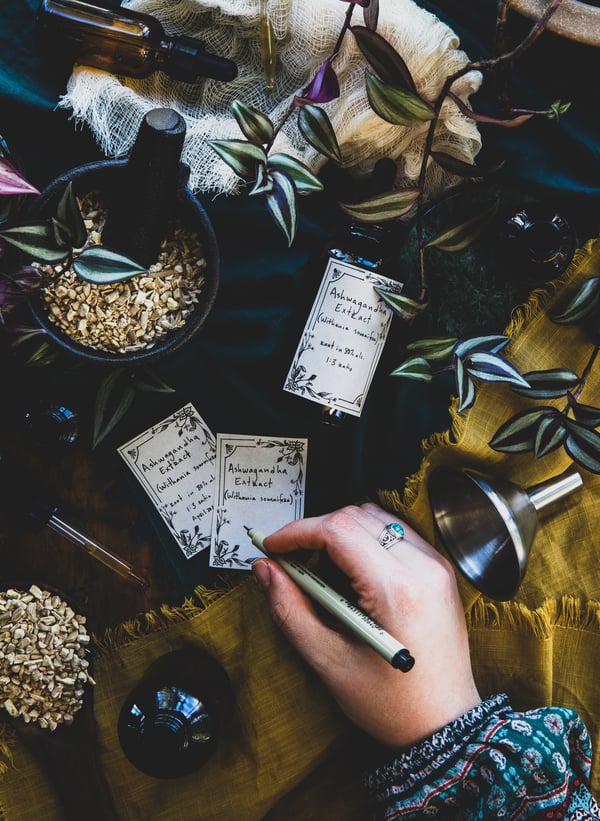
Herbalism encompasses a wide range of traditions, each with similarities and differences from each other. However, one core principle that applies to traditions found all around the world is herbal energetics. To some, the word energetics conjures thoughts of the esoteric or "woo-woo", but energetics are very real and can be felt in the body. You can experience this simply by sipping on a cup of ginger tea and then following that up with a cup of marshmallow tea. Upon sipping the ginger tea, your body will begin to feel warmth, followed by a drying sensation. After you have had time to sit with that sensation, sip on the marshmallow tea and feel the difference. The cooling and moistening effects will counteract the ginger and your body will feel very different after that next sip. That is energetics in action!
There are four main pillars of energetics—hot, cold, moist, and dry. Some herbal modalities refer to additional energetic states or may call them different things, but these tend to be the foundational ones found across the board. When we think about energetics, there are many things to consider. The constitutional makeup of the person, the energetic state of an organ system or systemic condition, and the energetics of the herb itself.
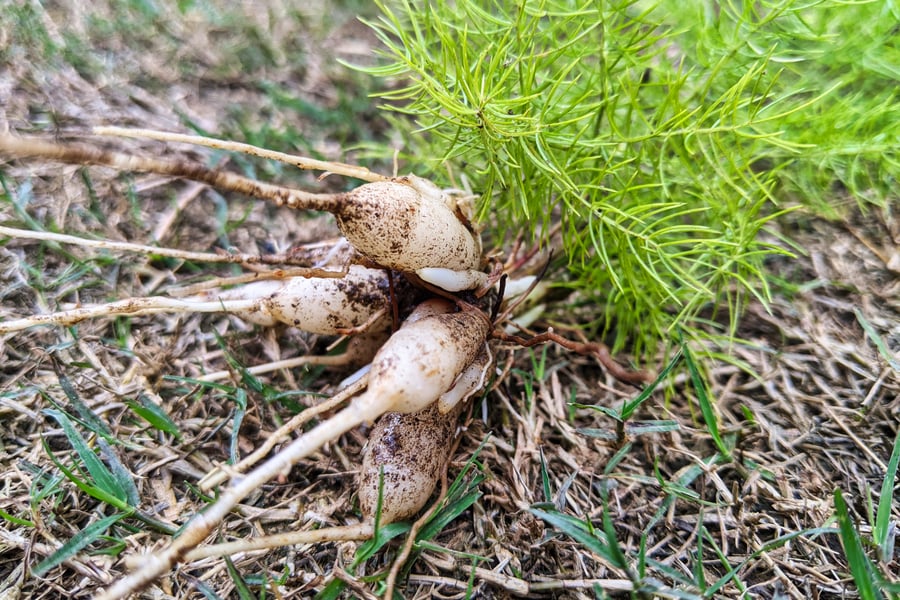
For the purposes of this article, we are focusing on herbs and like all things in nature, herbs don’t always neatly fit into one category or another. There are also different ways of evaluating energetics. For example, someone may include shatavari in the moistening category if they are thinking of its demulcent qualities for certain organs. However, it is also a diuretic, which causes fluid to leave the body and, as a result, may be categorized as overall drying. It’s all perspective and the way it is being used. It is for this reason that lists like this can vary, and it is important to understand how they are warming, drying, cooling, or moistening so they can best be applied to your situations and goals.
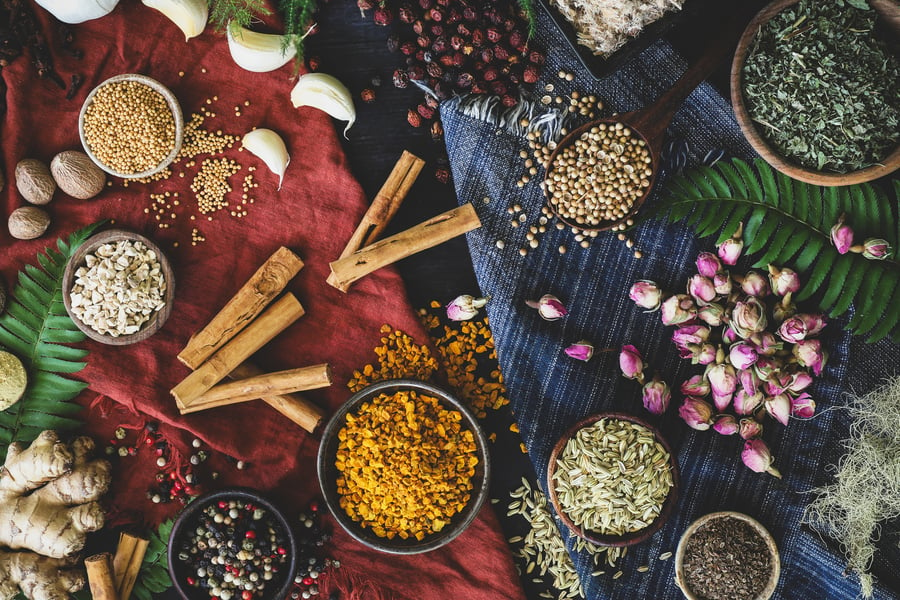
Warming Herbs
Warming herbs help promote circulation and bring balance to conditions characterized by coldness and stagnation.
- Anise
- Ashwagandha
- Cayenne
- Cinnamon
- Cloves
- Cumin
- Garlic
- Ginger
- Horseradish
- Mustard
- Nutmeg
- Peppercorns
- Turmeric
Cooling Herbs
Cooling herbs help to counterbalance hot states or conditions of the body. One of the most obvious examples of this is putting aloe on your skin after a sunny day spent outdoors.
- Aloe
- Coriander
- Dill
- Fennel
- Hibiscus
- Lemon Balm
- Marshmallow
- Mint
- Nettles
- Plantain
- Rose
- Rosehips
- Saffron
- Slippery Elm Bark
- Usnea
- Yarrow
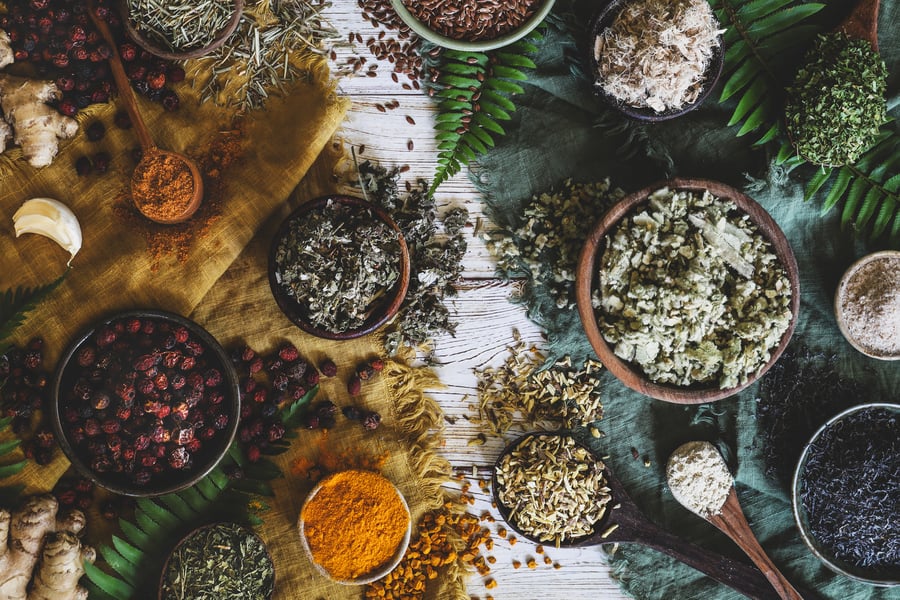
Drying Herbs
Drying herbs tend to support wet stagnation and excessive secretions.
Moistening Herbs
This classification of herbs may help hydrate and soothe dry and irritated tissues.
- Aloe
- Flax Seed
- Irish Moss
- Licorice
- Linden
- Marshmallow
- Mullein
- Oatstraw
- Plantain
- Psyllium
- Slippery Elm Bark
In Closing
This article is intended to be a starting place for understanding herbal energetics. You could study herbal energetics for a year and still have a lot to learn. Some teachers who I think do a great job teaching herbal energetics include:
- jim mcdonald
- Kat Maier (She has a great book called Energetic Herbalism.)
- Thomas Easley
- Rosalee de la Foret
- Sajah Popham
- Thomas Avery Garran
Looking to Learn More About Herbalism?
Check Out this Guide to Herbal Actions
You might also enjoy:
- Creating Your Home Apothecary
- The Importance of Labeling Handcrafted Goods
- Must-Have Tools for Herbalists
